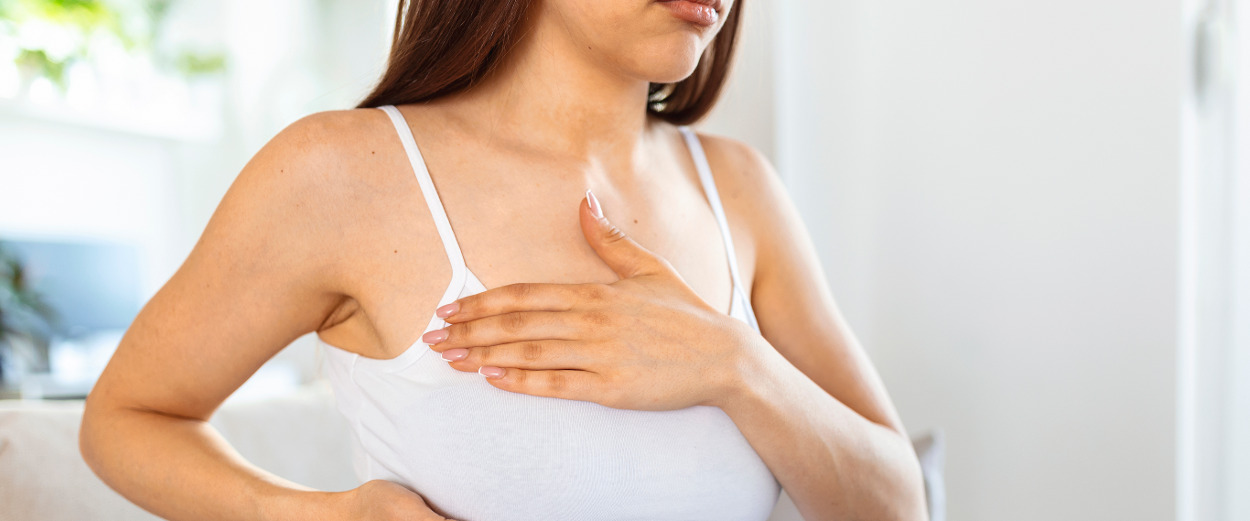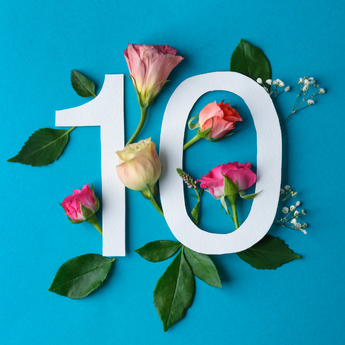By Adriana Ermter
In our monthly column, senior writer and editor Adriana Ermter shares her personal experiences with breast cancer.
Put your hand up if the thought of being screened for breast cancer never crossed your mind until you or your doctor found a lump in your breast or armpit? I’m literally holding my left arm up in the air right now, as I type this. Crazy isn’t it, that we don’t think to have the girls checked to make sure they’re healthy until something goes wrong or until someone we know has been diagnosed with breast cancer.
It certainly didn’t occur to me that I could and would become one of the one-in-eight women the Canadian Cancer Society says will develop breast cancer in their lifetime. And yet, here I am—the first breast cancer patient and survivor in my family. My lackadaisical approach towards screening for breast cancer (and maybe yours too), can’t be blamed entirely on my ostrich behaviour. Canada’s current screening system perpetrates that it’s an older woman’s disease and one that typically requires a familial history. Nearly every medical practitioner will ask if you have a history of breast cancer within your immediate family. Answering “no,” combined with being younger than 62 years, which is, according to the American Cancer Society, the average age of a breast cancer diagnosis, and not carrying the BRCA1 or BRCA2 genes can leave you shit out of luck when it comes to having easy access to screening, too. It did for me.
I quickly learned that scheduling a mammogram, which is a basic health exam for your boobs, is not like booking an annual check-up and teeth cleaning with your dentist. It should be, but it’s not. While access is improving, most provinces won’t easily provide you with an annual mammogram before the age of 50. The only way you’re going to get the screening you need is by advocating for it. Asking for what you want and need and remaining persistent is one of the best ways to ensure you have regular access to screening tools. Here are the five screening tools you need to know about, so that you can access them as needed.
- Breast Self-Exams
A simple, at-home monthly method to use to check your breasts for lumps, changes or abnormalities that could indicate breast cancer.
How it works: This exam involves visually inspecting and feeling your breasts and armpits, using different hand movements and pressures. I wrote about how to do a breast self-exam in-depth here, but in a nutshell: look at your naked boobs in the mirror to make sure they look like they always do. Then, feel them for any lumps, swollen parts or tenderness. The exam works best when you do it three or four days after your monthly period.
Access: Any time you like, since you’ll be the one doing it. I recommend the first of every month, so that it’s easy to remember.
- Mammogram
An X-ray image of the breast’s tissue that is used to detect and diagnose breast cancer, often before symptoms appear. Mammograms are valuable for their ability to detect small tumors, increasing the chances of successful treatment. They are an excellent early detection tool.
How it works: By compressing the breast to spread the tissue, a mammogram captures detailed images that can reveal abnormal growths or changes in the breast tissue. It’s uncomfortable, your boob is being squished and contorted beneath metal plates, but each X-ray takes only a couple of seconds to capture.
Access: After the age of 50 and typically with your general practitioner’s (GP) referral, you may schedule an annual mammogram. But here’s the thing: because regular mammograms are a crucial tool in early breast cancer detection, I believe that they should be accessible to all women once they turn 40—except that they’re not. Each province follows a different set of rules, complete with how old you need to be to have a mammogram, which you can read about at MyBreastScreening.ca. It’s not right, nor is it fair, considering early detection can save lives.
- Ultrasound
A non-invasive imaging technique that uses high-frequency sound waves to create detailed images of the breast, which help to detect abnormalities such as lumps or cysts.
How it works: A small transducer is moved over the breast, sending sound waves that bounce off tissues, producing real-time visuals.
Access: There are no age restrictions for ultrasounds and if you have dense breasts or if you’ve felt a lump in your armpit, you need an ultrasound in addition to a mammogram. Why? Because you can’t squish your armpit between the mammogram’s plates and mammograms can miss abnormalities like cancer lesions in dense breasts. Dense tissue can obscure cancer on X-rays, making ultrasound a better option for clearer, more accurate detection in such cases and a way to further investigate suspicious findings from mammograms or physical exams without exposure to radiation. According to Dense Breasts Canada 56 percent of women in their 40s have dense breasts (I have dense breasts.), which means that these women can benefit from ultrasound screening.
- Magnetic Resonance Imaging (MRI)
A powerful diagnostic tool that uses strong magnetic fields and radio waves to generate detailed images of the breast tissue.
How it works: Unlike X-rays used in mammograms, MRI scans do not involve radiation. Instead, they provide highly detailed cross-sectional images, making it easier to spot abnormalities. Breast MRIs are recommended for women with dense breasts, as dense tissue can obscure potential cancers in mammograms. Having an MRI is painless. You simply take off your top and bra and lie face down on a metal bed in a dome-like structure. The technicians will give you headphones to wear, as there’s a lot of loud clanging and banging involved. The process is slow though and you can’t move while you’re being screened in the MRI machine, not even a tiny bit. If you’re scheduled for a MRI, I recommend asking for a blanket for the lower half of your body, as the room can be cold and then, when you’re in the scanner close your eyes, focusing on your breathing. This will help keep you calm and it will help pass the time.
Access: Women with a high risk of breast cancer, due to family history or genetic factors, often undergo MRIs in addition to regular mammograms. But and this is a big one, most women are given a MRI only after a mammogram and/or ultrasound, when the doctors need a clearer image to detect small or hidden tumors that might have been missed with other screening methods.
- Syantra DX™ Breast Cancer
A non-invasive blood test designed to detect breast cancer.
How it works: The test analyzes specific biomarkers associated with breast cancer, offering an alternative to and/or a supplementary test for traditional screening methods. It's suitable for women ages 25 to 75 and can be especially beneficial for women with dense breast tissue or those seeking more frequent monitoring.
Access: This is a relatively new screener; it has been available to Canadians since November 2021. Ask your GP about it and they can refer you to an authorized clinic or lab to facilitate the test. The Syantra DX™ Breast Cancer test is not currently covered by Canada's public healthcare system and costs around $499 per test, which you will have to pay out-of-pocket. Still, it’s a convenient option for early detection and it can provide peace of mind, knowing that you can access this screening tool at any time.
Adriana Ermter is a multi-award-winning writer and editor. Her work can be read in Sotheby’s Insight, Living Luxe and IN Magazine, as well as online at 29Secrets.com, RethinkBreastCancer.ca and AmongMen.com. The former Beauty Director for FASHION and former Editor-in-Chief for Salon Magazine, Childview and Figure Skater Fitness magazines lives in Toronto with her two very spoiled rescue cats, Murphy and Olive. You can follow Adriana on Instagram @AdrianaErmter.







